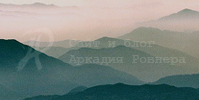HENRI TRACOL – THE BIRTH OF A SCULPTURE
Henri Tracol replies to the questions of a journalist about his experience as a sculptor (broadcast of December 7, 1981 on the France-Culture network as a guest of Pierre Descargues’ program “Le Monde au singulier” by request of Georges Patrix). Translated from Pourquoi dors-tu Seigneur? by Henri Tracol, Edition Pragma, Paris 1983, and reprinted by permission.
His first concern is not to be misunderstood:
… I am not a professional sculptor. I have not taken courses at any art school, nor even attended a “workshop.” At most I have received good advice from sculptor friends who encouraged me in what can well be called a vocation.
One thing is certain: I have the greatest respect for the craft, for its rules, its standards, its requirements—for the tools, the set-up, etc. And above all, I respect the material, the matter itself, which must in no way be violated, destroyed, or ruined, but on the contrary must be called to life, to its proper life.
What could this mute, inert block of stone really want to say? It is as if it were waiting for me so as to discover, through me, its true form. And as I ask myself that question another one necessarily arises: What do “I” want to say? What is the meaning of my presence on earth? What sense can I find in this unknown presence, this unknown which I am?
Question: Then it can be said that art is self-knowledge—and at the same time that self-knowledge is an art?
Tracol: Indubitably. It is an art with its laws, which may not be broken.
But I am systematically antisystematic. I am always careful not to fall into the trap of “believing I have understood” just because I caught some propositions on the wing which are not translated into experience, even though they come together in a very coherent manner. To speak more precisely, I think the most important thing is to enter into the state of The Birth of a Sculpture experience, to feel that one’s self is this matter upon which all kinds of forces are independently acting. What allows me to be in some way the sculptor of myself, and at least to cooperate with the forces that are shaping me? If I don’t, I allow the forces to act, and somehow make anything they want of me.
And yet something is called within myself. I am that kind of being who is, in a sense, invited to take part in his own formation. And perhaps that is what most holds my interest—an interest in self-knowledge through the experience of art, not an intellectual interest but one from a much deeper source, deeply buried.
Question: This self-knowledge, this plunge into experience which you have described—how could it be related to what I call the theory of consciousness? How can I find my way here?
Tracol: How to find one’s way here! Maybe a whole lifetime would not be enough for that. But the search is possible—an honest search. Anything resembling a projection of what one thinks has been understood by reading books or listening to “connoisseurs” would be cheating. I must feel myself directly concerned, whether or not associated with an attempt at sculpture: that is something to which I give myself very directly, again and again. I try to position myself in order to be, as it were, more conscious of the forces that pass through me. Thus I may have more understanding of their direction and orientation, adapt myself better to them, and improve my attempts to be a good instrument, a conscious instrument.
This is where the mystery re-emerges. How can I be a conscious instrument of the forces that pass through me and which determine what I am? How can I knowingly be an artisan of work which is in progress? How can I do this with some degree of autonomy, in a way that really makes me try to perceive what I am called upon to be in my own right?
Echoing what I have just tried to express, a sentence from Elie Faure has haunted me since my youth: “The only man who increases the spiritual mass of humanity is the one who possesses the strength to become what he is.”





